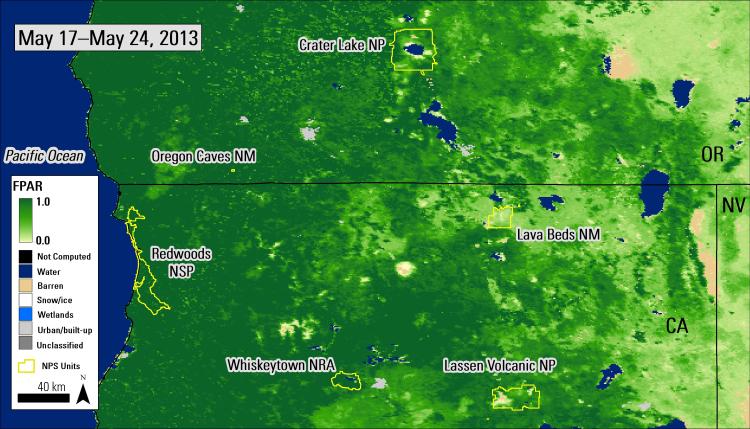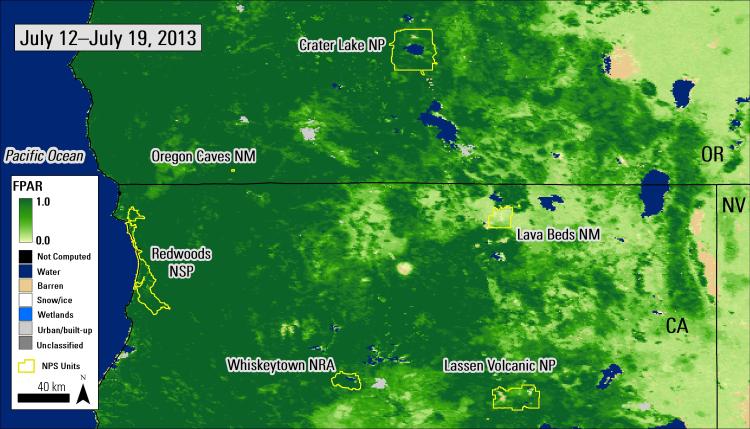Introduction
Author's note: Since the time of publication, the MCD15A2 product has been replaced with the MCD15A2H product.
Ecology can be described as the study of interrelationships between organisms and their environments. As such, ecologists are tasked with gathering data from many different disciplines, sources, and at varying scales in order to successfully study how organisms interact with the environment. Stephens and others (2016) recently highlighted an example of the complexities of ecology by examining how bird species co-exist spatially to form communities in response to their environment in terms of climatic, geographic, and vegetation variables.
The authors explore this dynamic at three scales ranging from the entire Klamath ecoregion in Oregon and California down to a specific National Park Service (NPS) unit, including Crater Lake National Park. They use nearly 20,000 point-count surveys of birds in the region, grouped into 29 distinct bird communities, or individual suites of bird species living together on a particular landscape. The authors then examine the correlations between bird communities and 22 different environmental variables. The point-count surveys were collected between 1992 and 2013 during the breeding season, beginning around mid-May in the lower elevations and concluding by mid-July in the higher elevations.


